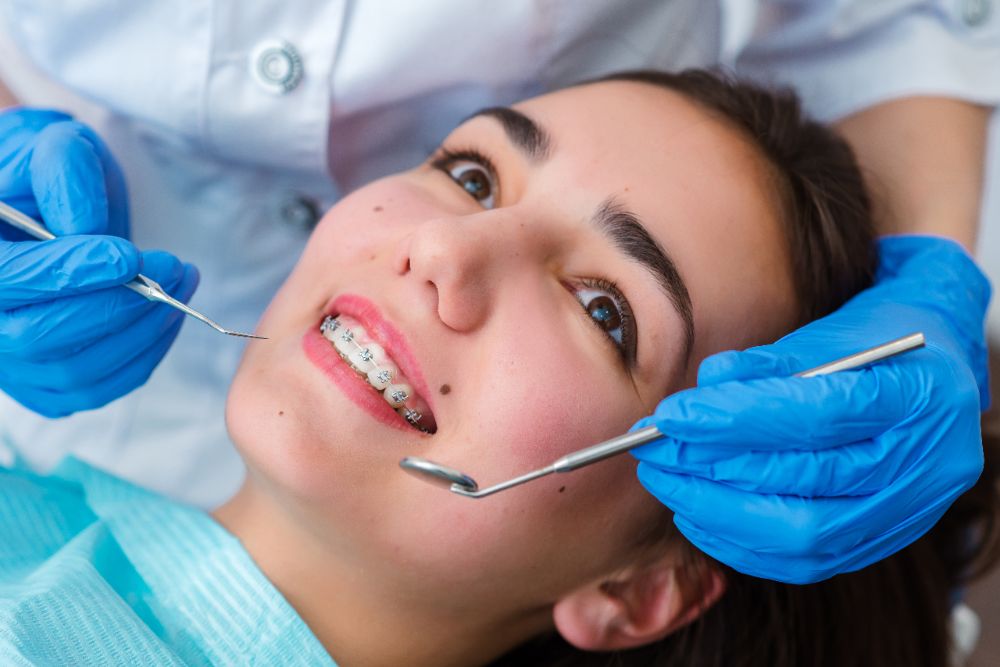Comprehensive Overview to Orthodontics Treatments for Fixing Oral Imbalances
In the world of orthodontics, the journey to achieving a perfectly lined up smile includes a myriad of treatments tailored to remedy oral misalignments. From conventional braces to unseen aligners and also medical options, the field of orthodontics provides a variety of remedies to address varying degrees of dental irregularities. Understanding the ins and outs of each treatment, including their systems, advantages, and possible downsides, is crucial in making informed decisions about one's orthodontic treatment. As we browse via the comprehensive guide to orthodontic treatments for correcting oral imbalances, the detailed information of each approach will certainly unravel, clarifying the path toward a useful and unified oral positioning.
Orthodontic Procedures Overview

Along with clear aligners and conventional dental braces, orthodontists might additionally recommend various other treatments like headwear, palatal expanders, or retainers to attend to specific placement problems (cumming orthodontist). These treatments are customized to every person's one-of-a-kind requirements and might involve a combination of therapies to accomplish the preferred outcomes. Routine changes and tracking are critical parts of orthodontic treatment to make certain progress gets on track and to make any kind of required adjustments along the way. By undergoing orthodontic procedures, patients can not just accomplish a straighter grin yet also enhance their general oral health and function.
Conventional Dental Braces: Just How They Work
When taking into consideration orthodontic treatments for dental imbalances, typical braces stand out as a tried and true technique for dealing with teeth placing. Standard braces are composed of braces, cables, and bands that work with each other to use continuous stress on the teeth, gradually relocating them into the desired alignment.
One trick aspect of exactly how typical dental braces job is the process of bone improvement. As stress is related to the teeth with the dental braces, the bone surrounding the teeth is reshaped to support the brand-new tooth placements. This improvement is essential for the long-term security of the corrected placement. People will need normal adjustments at the orthodontist's workplace to make certain the braces remain to apply the appropriate stress for reliable teeth activity.
Undetectable Aligners: Cons and pros
Unnoticeable aligners offer a discreet and convenient option to traditional dental braces for dealing with oral imbalances. These clear, custom-made trays are practically invisible when worn, making them an attractive option for people seeking an extra cosmetically pleasing orthodontic treatment. Among the key benefits of unseen aligners is their removability, permitting for much easier upkeep of oral health contrasted to standard dental braces. Clients can get rid of the aligners prior to consuming or cleaning their teeth, decreasing the threat of food obtaining embeded the appliance and simplifying the cleansing procedure.

Surgical Orthodontic Options
Surgical interventions in orthodontics present viable options for addressing complex dental misalignments that might not be successfully fixed with traditional orthodontic treatments. While typical dental braces and unnoticeable aligners can correct many orthodontic concerns, specific situations require medical treatment to achieve optimal outcomes. Surgical orthodontic alternatives are normally recommended for extreme malocclusions, significant jaw discrepancies, and situations where the underlying bone framework requires adjustment to achieve proper placement.
One typical surgical this page orthodontic treatment is orthognathic surgical treatment, which includes repositioning the jaws to deal with practical issues such as trouble chewing or speaking. This surgical procedure is commonly carried out in collaboration with an orthodontist that helps straighten the teeth before and after the treatment. Surgical orthodontics might also involve treatments to expose impacted teeth, get rid of excess gum cells, or reshape the jawbone to develop a much more unified facial account.
Before taking into consideration surgical orthodontic alternatives, clients undergo a detailed evaluation to establish the necessity and possible benefits of such treatments. cumming invisalign. While surgery might seem daunting, it can substantially boost both the function and appearances of the smile in cases where traditional orthodontic therapies fail
Retainers and Post-Treatment Care

Post-treatment care entails adhering to the orthodontist's instructions vigilantly. This might consist of correct dental hygiene practices, going to follow-up visits, and putting on the retainers as suggested. Failing to comply with post-treatment care instructions can lead to relapse, where the teeth slowly return in the direction of this article their initial placements. Regular retainer wear, excellent dental health, and normal oral exams are essential for maintaining the results achieved through orthodontic surgery and ensuring these details the long-term stability of the corrected dental placement.
Verdict
In final thought, orthodontic treatments offer different choices for correcting dental misalignments. Surgical orthodontic options are offered for more severe imbalances. Overall, orthodontic treatments can effectively improve oral wellness and aesthetic appearance.
As we navigate with the comprehensive overview to orthodontic procedures for dealing with dental imbalances, the detailed details of each method will unfold, dropping light on the course towards a functional and unified dental alignment. - orthodontist
One of the most typical orthodontic therapies is the usage of dental braces, which are composed of metal braces and cords that use gentle pressure to slowly move teeth into the preferred setting.When thinking about orthodontic therapies for dental imbalances, traditional dental braces stand out as a tried and true method for dealing with teeth positioning. Additionally, undetectable aligners may not be suitable for complicated orthodontic concerns that require even more significant teeth activity, as they are generally suggested for moderate to modest situations. Retainers are personalized orthodontic devices developed to hold teeth in their remedied positions after the completion of orthodontic treatment.